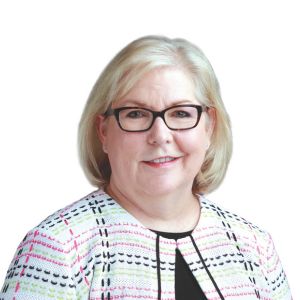Learning Together as a Team Boosts Both Teachers’ Practice & Student Achievement
Fisher & Frey: Our work in 115 schools shows the benefits of professional learning communities that focus on student data and continuous improvement.

Get stories like this delivered straight to your inbox. Sign up for The 74 Newsletter
A professional learning community (PLC) is a structured, collaborative group of educators who come together regularly to discuss their teaching practices. They take collective responsibility for student learning by working toward shared goals and relentlessly focusing on the evidence they collect and analyze from students. Research strongly suggests that PLCs can positively impact both teacher practice and student achievement.
In working with some 115 schools around the country, we’ve seen that PLCs are effective only if they foster a culture of continuous improvement in which educators learn together as a team. As they work through multiple cycles of improvement, they build collective confidence in the belief that they, as a group, are having a positive impact on student learning.
This process starts with taking a strengths-based approach that focuses on what students know and can do, and how to use those strengths for further development. If a PLC devolves into just another department meeting, its potential to create meaningful change is lost. Rather than focusing on questions such as “What are we going to do about these kids who aren’t paying attention?” a strengths-based PLC might begin by asking, “How are we learning together as a team to engage students?”
To move the conversation from the abstract to the specific, effective PLCs include one or more activators — teachers or coaches who have completed training in how to maintain the group’s focus on learning together. By emphasizing the team’s strengths as well as its members’ shared responsibility for student success, activators cultivate a supportive environment that makes teachers feel that they are part of something important, effective and bigger than themselves.
When teams first come together, they tend to set relatively easily attainable goals for themselves, so one of the activator’s roles is to encourage the PLC to establish appropriately challenging aims for the group. The activator monitors how the team works, always with an eye toward getting the most efficient use of the team. As members develop procedures and norms together, they build trust in one another and in the group as a whole, which leads them to set increasingly challenging goals for themselves.
In our work, we’ve seen some PLCs get off to a strong start but become less energized as the year goes along. Teachers, like students, are more engaged when they’re working on something they’re interested in, so the specific teaching challenge that the group addresses can make an enormous difference, as can the length of time spent focusing on it. At Health Sciences High and Middle College in San Diego, where we serve as teacher leaders, our PLCs are teams of six teachers who work in nine-week cycles. During the first cycle of the year, every group focuses on one topic that the entire school has prioritized, such as multilingual learners. To shift from collaboration to innovation, every group meets weekly for the first eight weeks. During the ninth week, all the groups come together to share what they’ve learned. For the second cycle, teachers can propose an area they’re interested in learning more about, and peers who share that interest are free to join a group that’s exploring an issue they care about.
For teams to maintain their momentum throughout each cycle, teachers need to see and share direct evidence of improvement in their classrooms. Educators in successful PLCs build their agendas by bringing student data to meetings. In our school, we provide matrices for teachers to use to assess their collective learning and impact on students. These resources support them in answering two fundamental questions: “What was the impact that your work had on students?” and “Was the effort worth the results you got?”
A truly effective PLC includes the entire school, not only the six teachers sitting around a table at a meeting every Wednesday afternoon. Those six people may have a strong collective efficacy and develop some innovative practices, but without a forum for them to share what they’re learning, they can’t spread that innovation. The school leaders’ role is to create regular opportunities for teachers to learn from one another, as they do in the ninth week of our PLC cycles. For teachers, knowing that they will be presenting what they’ve learned to their colleagues fosters a sense of accountability and motivation to stay engaged — as do the occasions when they learn something they can use in their own classroom.
This collaborative learning empowers educators to take risks. A thoughtfully managed PLC provides a framework in which they can gather evidence that some aspect of their teaching has to change and show proof that the change is having the intended effect. When that innovation results in improved learning, the whole school deserves to celebrate what they, as a professional learning community, have learned together.
Get stories like these delivered straight to your inbox. Sign up for The 74 Newsletter

;)

